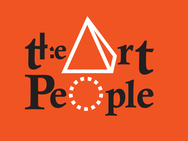Nurturing Resilience: 5 Everyday Activities to Build a Growth Mindset in Children
As parents and educators, we pour our hearts into nurturing not just the intellect but also the spirit of our children. We yearn to watch them grow into resilient beings, equipped with a growth mindset that becomes their invisible cape, fluttering behind them as they soar through life’s challenges and triumphs. Here are five everyday activities imbued with love, designed to plant and water the seeds of a growth mindset in our little ones.
In weaving these five simple but profound activities into the fabric of our daily lives, we do more than just teach — we inspire. We nurture not just learners, but thinkers, dreamers, and doers. With each loving interaction, we encourage our children to stretch beyond the boundaries of “can’t” into the expansive skies of “can.”
For every lesson learned, for every struggle faced head-on, they gather the courage and the strength to embrace life’s array of colors.
Conclusion - The Love That Fosters GrowthAs we weave these activities into the tapestry of our children’s lives, we must remember that the most fertile ground for a growth mindset is one that is rich with love, support, and understanding. Each moment spent engaging in these activities is an investment in our children’s futures, planting the seeds of resilience, adaptability, and lifelong learning.
In nurturing a growth mindset, we are doing more than helping our children succeed academically or professionally. We are helping them to become individuals who can face life’s challenges with courage and grace, who find joy and value in the process of growth, and who understand that their potential is not set but ever-expanding.
As we guide our children through the winding path of personal growth, we do so with the hope that they will not only reach their destinations but also savor the journey. We hope that the resilience they develop will not only serve them in the face of adversity but also inspire them to lift others up. This is the loving legacy of a growth mindset – one that transcends the individual and has the power to uplift generations to come.
- 1. The Power of "Yet" - Cultivating Patience and PersistenceImagine your child, frustration etched across their face, a math problem or a complex puzzle laying siege to their confidence. They drop their pencil and declare, “I can’t do this!” This is a golden opportunity, not a defeat. Sit beside them, offer a comforting smile, and gently introduce the power of "yet." Explain that some things take time and effort, and that’s perfectly okay.
- 2. The Family Project - Teamwork and Shared LearningGrowth mindset blooms beautifully in the soil of collaboration. Start a family project, something that’s a bit of a stretch for everyone involved. It could be building a model airplane, starting a small garden, or even a DIY home improvement task. The key is to choose an activity that is new to everyone, leveling the playing field and emphasizing that learning is a lifetime adventure.
- 3. Reflective Storytelling - Embracing Growth in the Narrative of Our DaysStorytelling is as old as time, and it’s a profound way to instill a growth mindset. As the day winds down, share stories with your children — tales of when you learned something new or made a mistake and what you gained from the experience. Ask them about their day too, not just about what they did, but what they felt and learned.
- 4. Mindful Encouragement - Celebrating the Effort, Not Just the AchievementIn a world that often spotlights the end result, it’s our loving task to shine the light on the process. Praise your children for their effort, their strategy, and their perseverance. Whether they bring home a perfect test score or a drawing that didn’t quite turn out as planned, let your applause ring for the effort it took to get there.
- 5. Role-Modeling Resilience - Leading by Heartfelt ExampleChildren learn a great deal by observation. They watch us, even when we don’t realize it. Let them see you try new things, struggle, persist, and sometimes fail. Whether it’s picking up a new skill like cooking a complicated dish, or attempting to fix a leaky faucet, invite your children to see your process, warts and all.
In weaving these five simple but profound activities into the fabric of our daily lives, we do more than just teach — we inspire. We nurture not just learners, but thinkers, dreamers, and doers. With each loving interaction, we encourage our children to stretch beyond the boundaries of “can’t” into the expansive skies of “can.”
For every lesson learned, for every struggle faced head-on, they gather the courage and the strength to embrace life’s array of colors.
- Encouraging the Arts - Creativity as a Growth CatalystArt in its myriad forms is a natural ally of the growth mindset. Whether it’s drawing, painting, playing an instrument, or engaging in drama, the arts offer a playground for the mind. Encourage your children to express themselves through creative activities. The arts teach that there are many ways to see and interpret the world, fostering flexibility in thinking and an appreciation for diverse perspectives.
- Cultivating Curiosity - Questions that Lead to GrowthCuriosity is the seed from which a growth mindset grows. Encourage your children to ask questions, even those without immediate answers. When children express curiosity about how things work, why certain events happen, or about people and cultures, they are opening themselves up to a world of learning and growth.
- Healthy Risk-Taking - Stepping Outside the Comfort ZoneChildren who are afraid to take risks may avoid new experiences and opportunities for growth. Encouraging healthy risk-taking can be as simple as prompting them to try out for a school play, join a new sports team, or speak up in class when they usually wouldn't. Be their cheerleader, and remind them that success is not the absence of failure but the persistence through it.
- Setting and Reflecting on Goals - The Map for GrowthGoal-setting is a practical application of the growth mindset that turns aspirations into actionable steps. Sit down with your child and set some short-term and long-term goals. They could range from improving a grade in a subject, mastering a piece of music, learning a new skill, or even improving a personal relationship. The act of setting goals helps children understand that they can have a direct impact on their own development and that growth is a proactive process.
- Mindful Communication - Discussing the Why and How of ChallengesCommunication is key in teaching children about growth mindset. When faced with challenges, discuss them openly. Ask your child why they think a problem occurred and how they might overcome it. This encourages children to process their experiences and consider different strategies for improvement.
- Digital Wisdom - Technology and Growth MindsetIn this digital age, children are surrounded by technology that can both aid and impede growth mindset. Encourage the use of educational apps and games that challenge and stimulate the brain, and discuss how technology has allowed us to grow and learn in ways that were not possible before.
- Community Service - Empathy and Growth in ActionEngage in community service projects together. When children participate in helping others, they gain a sense of purpose and learn that they can effect positive change in the world. This fosters a profound sense of self-efficacy and shows them that growth is not just about personal development but also about contributing to the well-being of others.
Conclusion - The Love That Fosters GrowthAs we weave these activities into the tapestry of our children’s lives, we must remember that the most fertile ground for a growth mindset is one that is rich with love, support, and understanding. Each moment spent engaging in these activities is an investment in our children’s futures, planting the seeds of resilience, adaptability, and lifelong learning.
In nurturing a growth mindset, we are doing more than helping our children succeed academically or professionally. We are helping them to become individuals who can face life’s challenges with courage and grace, who find joy and value in the process of growth, and who understand that their potential is not set but ever-expanding.
As we guide our children through the winding path of personal growth, we do so with the hope that they will not only reach their destinations but also savor the journey. We hope that the resilience they develop will not only serve them in the face of adversity but also inspire them to lift others up. This is the loving legacy of a growth mindset – one that transcends the individual and has the power to uplift generations to come.







